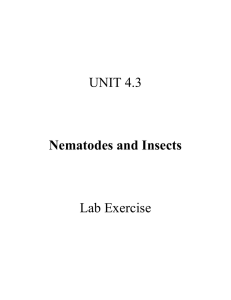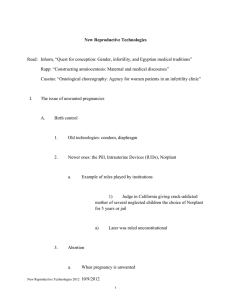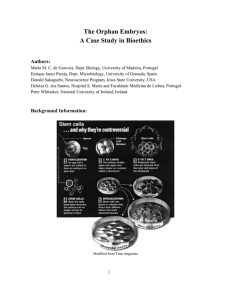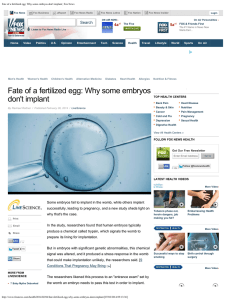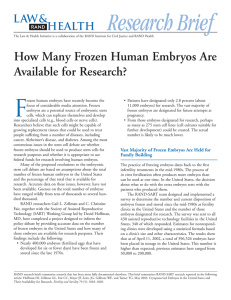Reproductive and Perinatal Epidemiology Discussion questions for Lecture 3, 2007 Schieve paper
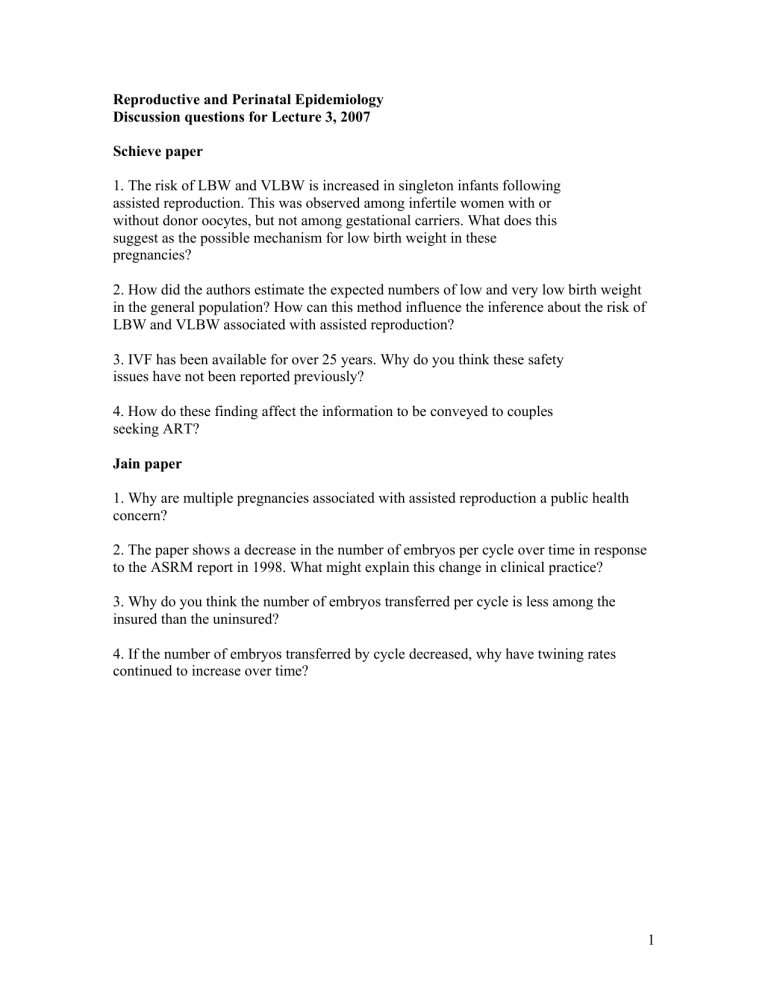
Reproductive and Perinatal Epidemiology
Discussion questions for Lecture 3, 2007
Schieve paper
1. The risk of LBW and VLBW is increased in singleton infants following assisted reproduction. This was observed among infertile women with or without donor oocytes, but not among gestational carriers. What does this suggest as the possible mechanism for low birth weight in these pregnancies?
2. How did the authors estimate the expected numbers of low and very low birth weight in the general population? How can this method influence the inference about the risk of
LBW and VLBW associated with assisted reproduction?
3. IVF has been available for over 25 years. Why do you think these safety issues have not been reported previously?
4. How do these finding affect the information to be conveyed to couples seeking ART?
Jain paper
1. Why are multiple pregnancies associated with assisted reproduction a public health concern?
2. The paper shows a decrease in the number of embryos per cycle over time in response to the ASRM report in 1998. What might explain this change in clinical practice?
3. Why do you think the number of embryos transferred per cycle is less among the insured than the uninsured?
4. If the number of embryos transferred by cycle decreased, why have twining rates continued to increase over time?
1







